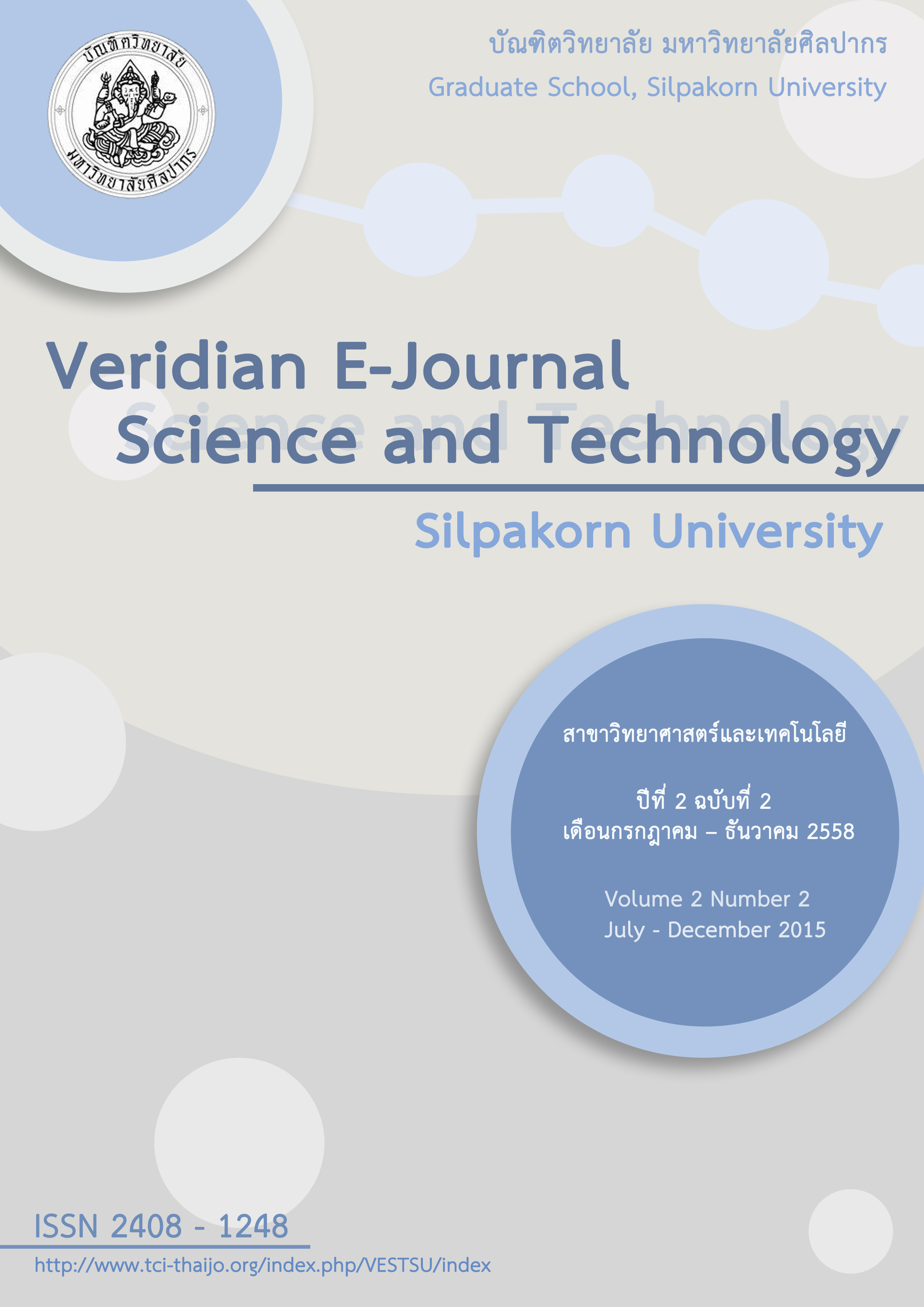การตรวจวินิจฉัยระดับวุฒิภาวะการจัดการความรู้เกี่ยวกับการประกันคุณภาพการศึกษาในสถาบันอุดมศึกษาไทยที่มุ่งการพัฒนาไปสู่สถาบันแห่งการเรียนรู้
Main Article Content
บทคัดย่อ
บทคัดย่อ
งานวิจัยนี้มีวัตถุประสงค์เพื่อตรวจวินิจฉัยระดับวุฒิภาวะการจัดการความรู้เกี่ยวกับการประกันคุณภาพการศึกษาของสถาบันอุดมศึกษาไทย กลุ่มตัวอย่าง คือ อาจารย์สถาบันอุดมศึกษา จำนวน 132 คน ซึ่งมาจากสถาบันอุดมศึกษาในประเทศไทยจำนวน 35 แห่ง ครอบคลุม 4 กลุ่มสถาบัน ได้แก่ (1) กลุ่มเน้นการผลิตบัณฑิต (2) กลุ่มเน้นการผลิตบัณฑิตและพัฒนาสังคม (3) กลุ่มเน้นการผลิตบัณฑิตและพัฒนาศิลปวัฒนธรรม และ (4) กลุ่มเน้นบัณฑิตและวิจัย เครื่องมือที่ใช้ในการวิจัย ประกอบด้วย (1) แบบสอบถาม (2) แบบสัมภาษณ์ และ (3) แบบบันทึกข้อมูล การวิเคราะห์ข้อมูลเชิงคุณภาพใช้วิธีการวิเคราะห์เนื้อหา และการวิเคราะห์ข้อมูลเชิงปริมาณ ใช้สถิติเชิงพรรณนา ประกอบด้วย ความถี่ ร้อยละ ค่าเฉลี่ย และส่วนเบี่ยงเบนมาตรฐาน และสถิติเชิงอนุมาน ประกอบด้วย การวิเคราะห์องค์ประกอบเชิงสำรวจ และการวิเคราะห์องค์ประกอบเชิงยืนยัน ผลการวิจัย พบว่า สถาบันอุดมศึกษาที่มีระดับวุฒิภาวะการจัดการความรู้อยู่ในระดับ4 (25.53%) คือ สถาบันอุดมศึกษากลุ่มเน้นผลิตบัณฑิตและวิจัย นอกนั้นเป็นสถาบันอุดมศึกษาที่มีระดับวุฒิภาวะการจัดการความรู้อยู่ในระดับ 3, 2 และ 1 คิดเป็น 65.95%, 6.38% และ 8.09% ตามลำดับ ผลการวิเคราะห์องค์ประกอบเชิงสำรวจแสดงให้เห็นว่า องค์ประกอบของการตรวจวินิจฉัยระดับวุฒิภาวะการจัดการความรู้เกี่ยวกับการประกันคุณภาพการศึกษาในสถาบันอุดมศึกษาไทยที่มุ่งการพัฒนาไปสู่สถาบันแห่งการเรียนรู้ มีจำนวน 6 องค์ประกอบ ได้แก่ (1) เทคโนโลยีสารสนเทศ (2) การจัดการองค์ความรู้ (3) ทรัพยากรบุคคล (4) การควบคุมและดำเนินการ (5) ประสิทธิภาพและการวัดผล และ (6) โครงสร้างองค์กร และผลการวิเคราะห์องค์ประกอบเชิงยืนยัน แสดงให้เห็นว่า องค์ประกอบของการตรวจวินิจฉัยระดับวุฒิภาวะการจัดการความรู้เกี่ยวกับการประกันคุณภาพการศึกษา มีความสำคัญอยู่ในระดับมากทุกองค์ประกอบ โดยเรียงลำดับความสำคัญจากมากที่สุดไปหาน้อยที่สุด คือ (1) ประสิทธิภาพและการวัดผล (ค่าน้ำหนักองค์ประกอบมาตรฐาน เท่ากับ 0.48) (2) การจัดการความรู้ (ค่าน้ำหนักองค์ประกอบมาตรฐาน เท่ากับ 0.46) (3) โครงสร้างองค์กร (ค่าน้ำหนักองค์ประกอบมาตรฐาน เท่ากับ 0.46) (4) ทรัพยากรบุคคล (ค่าน้ำหนักองค์ประกอบมาตรฐาน เท่ากับ 0.45) (5) การควบคุมและดำเนินการ (ค่าน้ำหนักองค์ประกอบมาตรฐาน เท่ากับ 0.43) และ (6) เทคโนโลยีสารสนเทศ (ค่าน้ำหนักองค์ประกอบมาตรฐาน เท่ากับ 0.40) ตามลำดับ
Abstract
This research aimed to diagnosis the maturity level of knowledge management related to the educational quality assurance of Thai Higher Education Institutions (HEIs). The sample consisted of 132 lecturers selected from 35 Thai HEIs covering four groups: (1) Teaching (2) Teaching and social development (3) Teaching and supporting culture and (4) Teaching and research. Three research instruments, consisting of (1) a questionnaire (2) interview form and (3) data record, were applied to collect data. As for qualitative data, content analysis was used. As for quantitative data, descriptive statistics consisting of frequency, percentage, mean, and standard deviation and inferential statistics consisting of Exploratory Factor Analysis (EFA), and Confirmatory Factor Analysis (CFA) were used. The research findings showed that the HEIs with the knowledge management maturity at level 4 (25.53%) were the HEIs focusing on teaching and research while other HEIs were with the knowledge management maturity at level 3, 2 and 1 (65.95%, 6.38% and 8.09%) respectively. In addition, the EFA result showed that there are six factors of the diagnosis of the maturity level of the knowledge management related to the educational quality assurance of the Thai HEIs leading to be learning organization. They comprised (1) efficiency and measurement, (2) knowledge management, (3) organizational structure, (4) human resource, (5) operation and control and (6) information technology. Furthermore, the CFA result showed that all the six factors were important at high level. The efficiency and measurement was the highest level with the standardized factor loading of 0.48, followed by the knowledge management with the standardized factor loading of 0.46, the organizational structure with the standardized factor loading of 0.46, the human resource with the standardized factor loading of 0.45, the operation and control with the standardized factor loading of 0.43, and the information technology with the standardized factor loading of 0.40 respectively.

